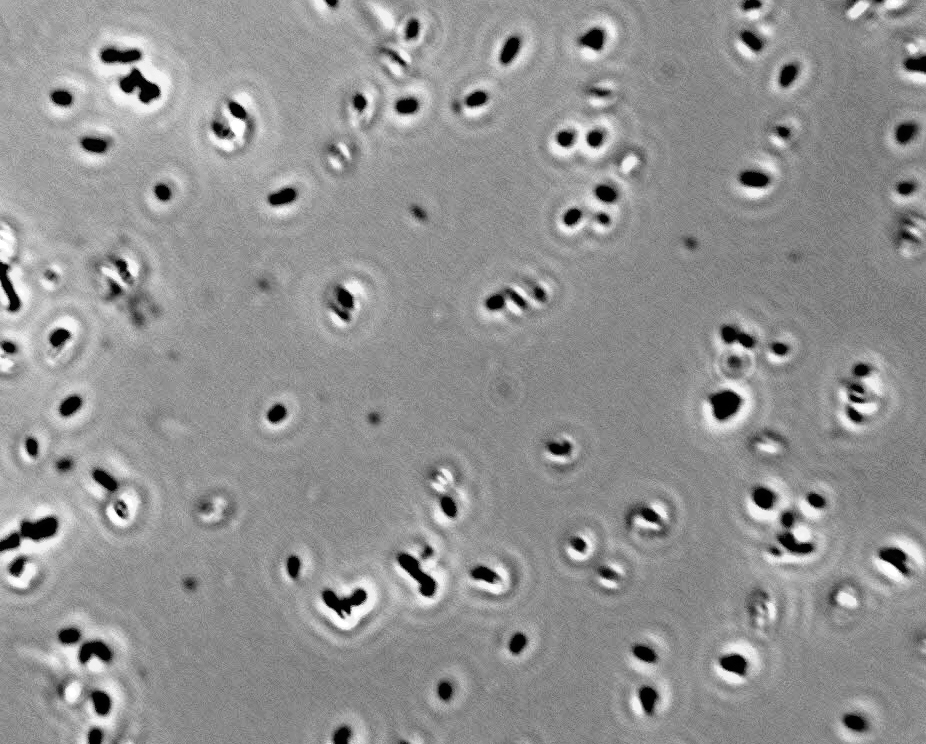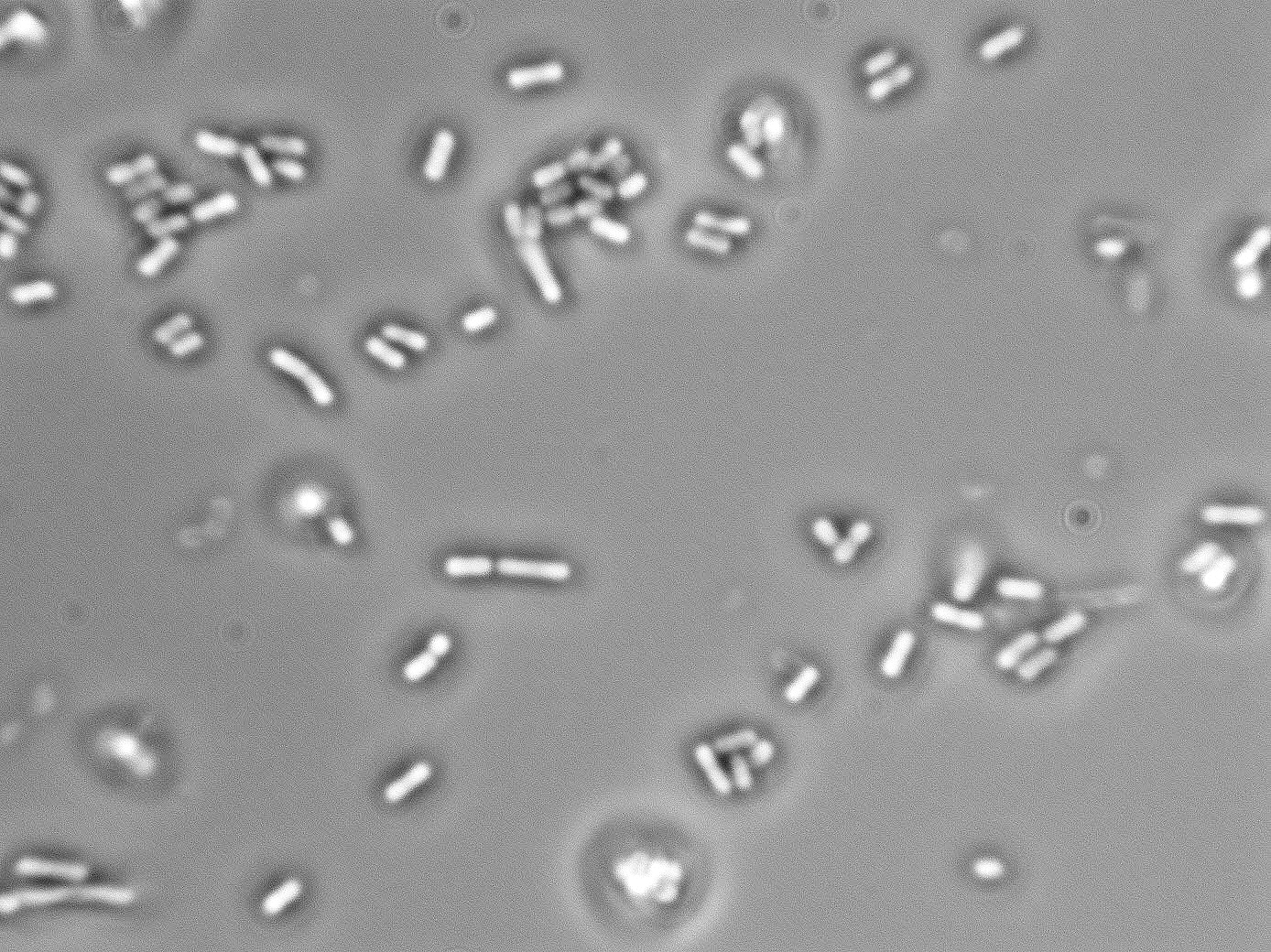Genus/species: Lactobacillus casei
Gram Stain: Positive
Morphology:
Cell: rod-shaped, 0.7-1.1μm x 2.0-4.0μm. Cell divisions occur in one plane; tendency to form chains
Colony:
Liquid Growth:
 |
 |
Physiological Traits:
Lactobacillus casei is a facultative homofermenter, metabolizes tartrate, malate and citrate into lactate, acetic acid, carbon diozide, and acetoin. The bacteria also contains an enzyme to convert malate to lactate in wine must. In the metabolism of malic acid, products include acetate, ethanol and carbon dioxide. Lb. casei is catalase negative and nonmotile, and they do not form spores.
Ecological Traits:
Lactobacillus casei can be found in decomposing plant material, dairy products, fermented meat and fish, beets, potatoes, mash, squerkraut, sourdough, pickled vegetables, silage, drinks, plants, water, juices, sewage, and animal cavities, and in wine.
Distinguishing Features:
The genome is available in its entirety. In mannitol fermentation of Lb. casei, oxygen is an external electron acceptor. Also, malic acid can be used as a sole energy source. It can perform fermentation of mannitol, cellobiose, and amygdalin. It grows at 15°C and not at 45°C. Less sensitive to the polypeptide Nisin than other lactic acid bacteria. Produces gas from citrate.
Role in wine:
Phages have been found in Lb. casei that can lead to stuck malolactic fermentation. Lb. casei also compete for sugars withSaccharomyces cerevisiae. Can contribute mousy characters in wine.
Sensitivities:
- SO2: Yes
- Sorbate: no
- DMDC: yes
- pH: very wide range of pH values, not including those found below most wines(3.0)
- Acids: yes, for pH below 3.0
- Ethanol: yes, growth and sugar metabolism decreases as ethanol content increases.
- Anaerobiosis: facultative anaerobiosis
- Heat: tolerance not above 45°C.
